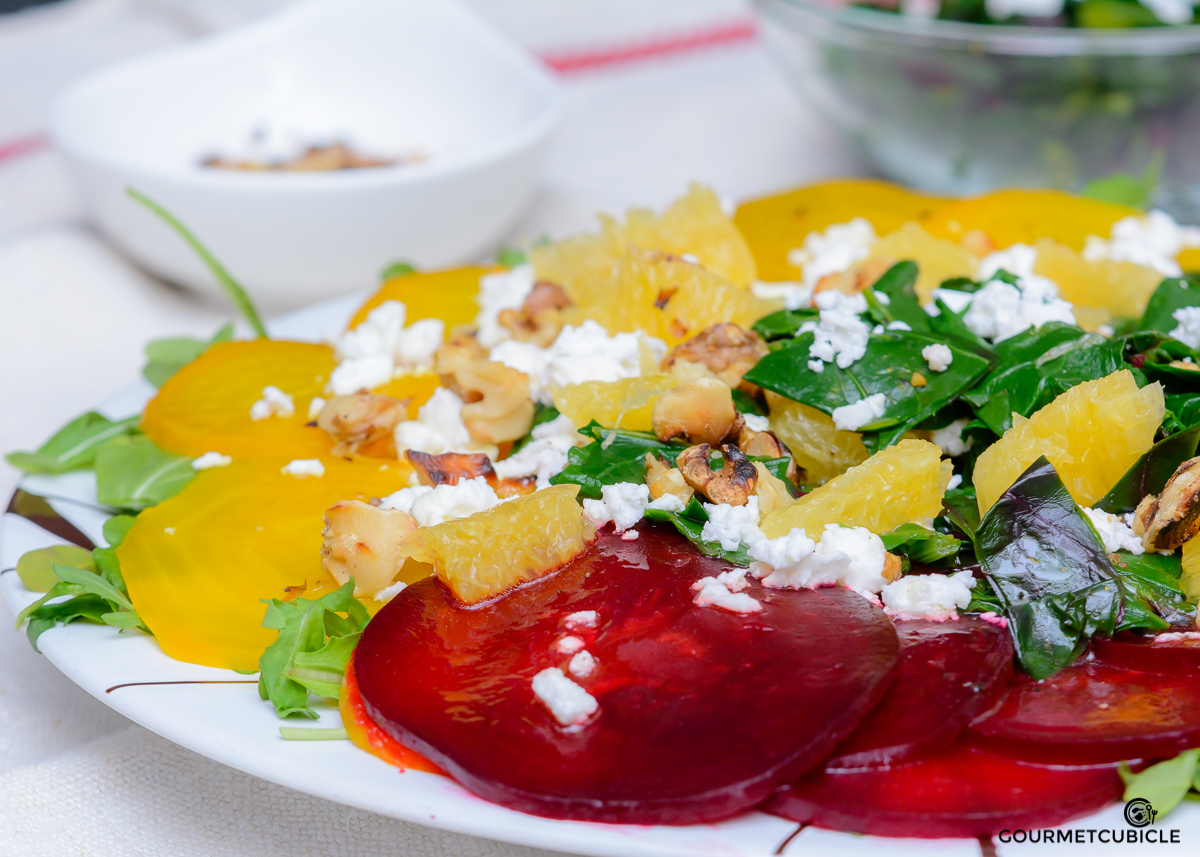Maria's Snow Crescents (Hókifli)
Cooking with friends is a monthly series in which my dearest friends are inviting me into their kitchens and teaching me their favorite recipes. These bonding experiences deepen our friendships, expand my palate, and enhance my culinary skills by sharing a timeless practice: cooking.
“Cooking with friends” blog posts are quickly turning into one of my favorite activities. It’s so refreshing and exciting for me to go into my friends’ kitchens and cook with them! Each experience is unique, and I’m able to discover a side of my friends that I wouldn’t otherwise have the chance to see. Some are strict recipe followers, and some are improvising adventurers. Seeing the way they work in the kitchen and learning from them while they tell me their stories always fills me with joy and gratitude. Add a drink into the mix and it feels like all your problems have melted away. Friends, food and drinks connect people from all backgrounds and walks of life, and through them, many of the world’s problems are solvable.
Maria is one of those friends who’s always been there for me. Whether she’s taking care of my dog, Popsi, while I’m away travelling, giving me advice during hard times, or just listening to me, she never disappoints. I’ve known Maria since I lived in Hungary but we became close friends once we each transferred to Austin with our jobs. Maria moved to Austin in 2010, and when I arrived in Austin in 2011, I appreciated having someone who spoke my native language to help me settle in. She understood and helped me through many of the struggles I encountered as a foreigner in a country with a culture that is so different than what I was accustomed to.
When I asked Maria about having a guest post on gourmetcubicle, her eyes lit up, but then she shyly said no. It took some convincing to get Maria to agree to cook with me. She initially felt that none of her recipes were special enough, which is hardly the truth. She’s an extraordinary cook. When Maria brings me her homemade Hungarian dishes, I always finish them in one sitting. Not only is her cooking phenomenal, but Maria always seems to know when I need some home cooking. I remember that when I got back from Cambodia last year, a bowl of stuffed cabbage rolls was waiting in the refrigerator with a note that said: “Merry Christmas and a Happy New Year! Enjoy the cabbage rolls. The sour cream is on the top shelf.” Every year on the first of January, Maria invites me over to eat Hungarian lentil stew. It’s a tradition in Hungary to serve lentils at the beginning of the New Year as they symbolize prosperity and wealth.
Maria is creative and artistic both inside and outside the kitchen. Right now she’s organizing her wedding, and she does it with so much calmness and grace that I wonder why this isn’t her full-time job. She’s designing everything from the invitations and decorations to the flowers and gifts. Everything is handmade with a touch of her own good taste. She and my other good friend Monika are creating things that are worthy of an Etsy editor pick. I hope they’ll start their own business sometime soon because the world could benefit from their creative talent.
But back to Maria’s cooking. She eventually agreed to share a recipe with me. She showed me how to make snow crescents, called hókifli in Hungarian. These tasty desserts were Maria’s grandmother’s specialty. Maria regaled me with stories of her grandma as we cooked together. She told me how her grandmother always made hókiflis, how they always turned out perfectly, and how they became her favorite childhood dessert. I hadn’t tried too many snow crescents during my childhood because my grandma made other desserts (like Zserbó Cake (Gerbaud Cake)), but once I tried them at Maria’s, I instantly fell in love with them. They are not too sweet and not too heavy on filling. They are a tasty treat on their own, but eating them with your coffee will make you think you’re in a nice little café somewhere in Europe. Enjoy!
Maria's Snow Crescents (Hókifli)
Yields 24 pieces
Prep time: 30 minutes
Cook time: 15 minutes
Inactive time: 30 minutes
Ingredients
- 14oz (400g) all-purpose flour (plus more for kneading and rolling)
- 3.5oz (100g) white sugar
- 1/2 tsp baking powder
- 2 sticks (200g) unsalted butter (at room temperature) + 1 TBS for greasing the cookie sheets
- 3.5oz (100ml) whole-milk (at room temperature)
Filling
- 7oz (200g) ground walnuts (replace with pecans for a more mellow flavor)
- 3.5oz (100g) powdered sugar
- .5oz (30ml) spiced rum
- 3-4 tsp fresh lemon zest (about 1 medium-sized lemon)
Sugar Dip
- 3.5oz (100g) powdered sugar
- .32oz (9g) vanilla sugar (see notes for homemade vanilla sugar)
Instructions
- Preheat oven to 400F (200C) degrees.
- In a medium bowl combine flour, sugar and baking soda. Using a whisk mix until well combined.
- Using your hands, crumble the butter into the flour. Make sure there aren't any large chunks of butter in the mixture. Slowly add milk and start kneading. Knead for about 5 minutes, sprinkling the dough with flour if it's too wet. Knead until the dough doesn't stick to the walls of the bowl.
- When done, cut the dough in half and shape each half into a softball-sized sphere. Sprinkle with flour, cover with plastic wrap and let them rest in the refrigerator for 15-30 minutes.
- Meanwhile in a medium sized bowl whisk walnuts, sugar, lemon zest and rum together until they reach the consistency of thick paste. Don't be shy; add more rum until the filling holds together.
- Sprinkle flour on a flat surface and lay a dough ball in the middle. Using your hands, flatten the dough ball into a disk shape. Use a rolling to pin roll it until it's about 1/5 inches thick.
- Using a pizza cutter or a sharp knife, slice the rolled dough into 12 slices. Repeat for the other dough ball.
- Add a teaspoon of filling to the wide end of each slice. Roll the slices from the outside towards the inside (from the wide end towards the narrow end). They should look like mini-croissants or crescents.
- Repeat steps 6-8 for the other dough ball.
- Grease a cookie sheet with butter and place crescents on it. Put them in the oven and bake for 17 minutes. Remove from oven when they start browning at the edges (the rest should be white).
- Set snow crescents aside and let them cool for one minute. Roll each snow crescent in the powdered sugar mix (they should still be hot when you do this). They break easily, so handle them gently. Serve alone or with coffee.
Notes
- To make homemade vanilla sugar, fill a mason jar with sugar, about 3/4 full. Cut a vanilla bean pod in half lengthwise and place both halves in the jar. Close the lid and shake vigorously. Let it rest for a bit et voilà, you've got yourself vanilla sugar! The longer you you rest the mixture the more intense the vanilla flavor will be. Refill the jar with fresh sugar every time you're running low.
- If you overcook the crescents a bit, don't worry. They will still be pretty good, but more crumbly. I personally prefer them moist, but if you want them crumbly, cook for 20 minutes instead of 17.
- Keep leftover crescents in a sealed Ziploc bag. This will keep them from drying out.






















